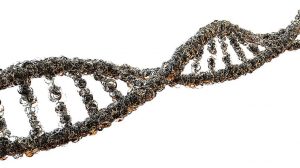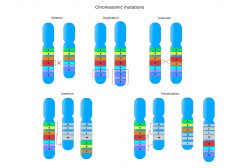In genetics, insertion refers to the type of mutation characterized by the insertion of one or few nucleotide base pairs to a DNA sequence or a chromosome. It may be small-scale or large-scale type. A small-scale type of insertion mutation involves the insertion of one or a few nucleotides into the DNA sequence. A large-scale type of insertion is one that involves a region of a chromosome. In this case, a nonreciprocal translocation occurs. A segment is removed from one chromosome and then inserted into a broken region of a non-homologous chromosome.
When one or more nucleotides are inserted into the genetic sequence, the reading frame is disrupted during transcription, and eventually, translation. This may result in an altered sequence of amino acids, extra amino acid in a chain, or premature termination. Hence, the newly synthesized protein could be abnormally short, abnormally long, and/or contain the wrong amino acids. It will most likely not be functional.
Insertion of a larger sequence of nucleotide base pairs into a chromosome may occur when there is an unequal crossover during meiosis.
See also
- Mutation
- Chromosome
- Small-scale mutation
- Deletion mutation
- Reading-frameshift mutation
References
- Genetics Home Reference. (2019). What is a gene mutation and how do mutations occur? Retrieved from Genetics Home Reference website: https://ghr.nlm.nih.gov/primer/mutationsanddisorders/genemutation
- DNA and Mutations. (2019). Retrieved from Berkeley.edu website: https://evolution.berkeley.edu/evolibrary/article/mutations-01
- What is a Mutation? (2019). Retrieved from Utep.edu website: http://utminers.utep.edu/rwebb/html/what_is_a_mutation_.html
- Mutation. (2019). Retrieved from Mit.edu website:http://web.mit.edu/saraht/Public/8.592FinalProject/Population_genetics/Mutation.html
© Biology Online. Content provided and moderated by Biology Online Editors


